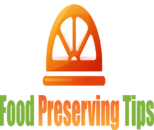This site is a participant in the Amazon Services LLC Associates Program. We are compensated for referring traffic and business to Amazon and other companies linked to on this site
A freezer is a life-saving option — the place to hold back leftover, pinch family meals and sweet delicacies for hot summer days.
And the USDA says that food consistently kept at 0 °F is always safe — it is just food quality that suffers (read: It will be OK to eat, but it might not necessarily have the taste or texture like afresh).
That means, not everyone’s freezer is 100% consistent, and if you open the door much, or live in an area that often loses power, the temperature can fluctuate.
This increases the risk of microbial growth in the food.
Unsafe or Just Bad?
You could say, “What’s the difference?” While you might not want to eat “unsafe” or “bad”, there is a difference. Unsafe foods can make you very sick. But, food in a freezer rarely gets to that point, with a couple of exceptions.
The first exception is when power is terminated but not always. If power is out too long, foods can certainly spoil. Later in the article, I will share food safety guidelines and how to thaw foods safely.
The second exception would be that food is placed in the refrigerator that is long on the counter or in the fridge. Freeze foods that have been compromised will not make the food healthy.
However, as long as it is kept at or below the consistent temperature of 0°F, the USDA says that frozen food should remain healthy.
However, if kept in the refrigerator for long periods or if the temperature is not consistently safe, its quality may be affected.
In some freezers, the temperatures can fluctuate, especially if the door is not sealed or opened much more. The texture and quality of food can be affected if that happens. And that’s the difference between bad to unsafe.
So, what signs could be better than throwing food out into the garbage for tonight’s dinner?
Whether it is safe or the quality in question, visual signs are needed in the decision-making process. Keep in mind, I won’t propose to taste the food to see whether or not it is good. That’s not advisable!
Here are some signs that frozen food has thawed and been refrozen. (Note: Tasting something is not involved in all of them!)
1. Inside the packaging are ice crystals.

Sweet little snowflakes that build up within your zip-top bag?
This is a sign of freezer burning as water molecules work out their way from food to colder areas of the freezer in your food (like its walls).
While the food is technically still safe to eat, the loss of moisture means that it will not have as good taste and texture when you reheat the food. It can also be a sign that the temperature in your freezer fluctuates.
You can use all your senses to find out if a piece of meat is burned freezer.
- See: Looking at a piece of meat, it has grey or brown spots, this is a tell-tale.
- Hear: Give a little squeeze of meat packed in butcher paper. Moisture is coming up from meat and has refrozen on the surface if you hear ice crystals cracking.
- Touch: Freezer-burnt meat looks like leather.
- Smell: A fast whiff can also tell you whether meat has developed a freezer burn. A good air exchange indicator between your food and freezer is a strong plastic-y-smell.
2. A color change in the protein.

If that red steak is greyish brown, or your pink pork looks dark brown or grey, be careful – these color changes mean they come in contact with air, at least so that it can be dry and smooth.
They may not taste great while technically safe to eat.
3. Vegetables look very dull.
Store broccoli is frozen for too long and it will lose its green, bright appearance.
The same is true of other cooked foods — if they aren’t as bright as they used to be, they often dry out because of improper packaging or are stored for too long.
4. When exactly you put something inside, you can’t remember.

Although ideally, frozen food may last forever, it will degrade its quality after a few months (and some foods, like mayonnaise, will not just freeze well, umm).
Get used to dating your frozen food when you put it in the freezer and use the Food Safety App from the government to find out when things will go beyond prime.
If something in the close surroundings leaked to another, it is just as big a problem. The quality and safety of your food are affected by this cross-contamination.
Follow the wise advice of grandmother: Throw it out, if in Doubt!!
5. Proof of spills exists.
It’s a bad sign when you see pooling at the bottom of your freezer, particularly pink meat juices.
Either your freezer somehow warmed up, something tanned, or juices dropped before the item frozen, contaminating any items which may have come into contact with the juices, which means it is no longer safe to eat if you don’t catch it immediately.
You want to purify the mess and evaluate what has happened.
6. A rancid odor is present or not.
It could not smell so clearly until the food is thawed, but it is bad because of sub-ideal freezers, especially in the case of meat and seafood, when it has a funky smell. Don’t risk it — simply call for some takeout.
7. Sticky or slimy, defrosted food.
Once something has been thawed check for the texture: It’s probably not good anymore when it’s sticky or slimy.
#A note on freezing food: Remember that if you immediately freeze things (compared to after a while on the counter or a few days in the fridge), they are going to last longer and taste better after you thaw them.
Thaw it in the fridge, in a microwave, or under cold running water when you’re ready to eat something – never at your counter!
What’s Next?
When you went to the freezer for dinner later that night or the next day just to find out that what you thought was dinner had just been ended in the garbage? It happened sufficient times for me now to learn my lesson.
The freezer is not an area where food can rest forever. I, therefore, decided to research what I did wrong and to look for in my freezer and out of it.
The freezer can certainly be a great storage tool for meats, cheeses, vegetables, and leafy deals such as ice cream. But with the use of it, responsibility comes to know how to correctly use it.
Read further to know the side effects of eating thawed refrozen food which horrified me to learn safe handling practices & how to thaw food safely. Don’t miss it keep going till the end.
Side Effects of Eating “Thawed Refrozen Food’’

The freezer keeps frozen food safe to eat for months, but the time it measures its edible phase begins to tick when the food thaws.
Even when you have safely thawed food in the microwave, freezing or cold baths, it will degrade its quality by refreezing.
You may become home to numerous food-borne diseases causing pathogens if you have thawed food at room temperature — an unsafe procedure.
Learn _What’s Freezer Burn?
The freezer burn occurs when moisture leaves the frozen food and leaves dried spots wherein the food becomes leathery or mealy.
Any food can develop freezer burn when it remains in your fridge too long, but it’s likelier to happen when you refreeze food after thawing it.
Thawing allows ice to melt back into the liquid water; when you freeze the food again, that liquid water turns into larger ice crystals that tear food apart from the inside, exposing more of the damaged cells to the surrounding atmosphere of your freezer and leaving it more susceptible to freezer burn.
Check Food Texture _ Is it Poor?
Large ice crystals degrade the texture of food, which makes larger crystals possible by refreezing a thawed product. The characteristic bell pepper crunch and steak juice are the results of the cell structures of the foods.
The food becomes mush when those cells break down under the force that ice crystals expand. To preserve the integrity of the texture of an ingredient, use it or cook it out of fresh shade shortly after it’s thawed.
- Large ice crystals degrade the texture of food, which makes larger crystals possible by refreezing a thawed product.
- To maintain the integrity of the texture of an ingredient, use it soon after it has been thawed or cook from a fresh condition.
Increased Bacterial Contamination Risk
Recovery of thawed food may create a possibility for microbial contamination depending on your thawing technique.
Whereas safe thawing methods outside the so-called hazardous zone (between Fahrenheit 40 and 140 degrees) are generally not an opportunity for bacterial contamination, the food may reach that hazardous area despite your care, but some food may be safe.
The contamination channel might be small, but even a small opportunity is used for microbes.
When you later freeze the thawed food, the microorganisms are also frozen and the next time you thaw it you have a chance to grow unchecked.
- Recovery of thawed food may create a possibility for microbial contamination depending on your thawing technique.
- You also freeze the microorganisms inside of the food again when you freeze it and give it a possibility of growing unchecked the next time you thaw it.
Safe Food Handling Practices

The guidelines on food safety of the U.S. Department of Agriculture suggest that food thawed in the refrigerator is safe for refreezing.
They note however that food that has been thawed in the microwave or in a cold-water bath needs to be cooked before freezing to prevent microbial from flourishing.
These are the only three methods that the USDA recommends for thawing food – microwaves, gradual thawing in refrigerators, and soaking in a cold-water bath.
Depending on your cooking technique, cooking without thawing is a different option.
- The guidelines on food safety of the U.S. Department of Agriculture suggest that food thawed in the refrigerator is safe for freezing.
- These are the only three methods that the USDA recommends for thawing food – microwaves, gradual thawing in refrigerators, and soaking in the cold water baths.
Guide on how to safely thaw food
When food is in the deep chill, air exposure is the enemy.
Air trapped or absorbed into the package from the freezer causes the food’s moisture to drain the food too dry.
Off-tasting flavors can also be provided by freezer air.
Squeeze out the most air possible in airtight containers that are just a little larger than what you are freezing (leaving space for expansion when the food is freezing) or in freezer packages.
Meat may be frozen, but not fully airtight in plastic-wrapped trays. Transfer to freezer bags or use a vacuum sealant for better storage.
Do not do it at room temperature when thawing food, because food is too long in “unsafe” temperature and risks bacteria growing which can make you sick.
If not, thaw foods in the refrigerator. If you are in a hurry, dive into the sealed food and thaw it every 30 minutes to ensure it remains cold.
Instead, change the water every 30 minutes. Thawing in the microwave is safe and is good for high humidity foods such as stews and soups. But skip the microwave for thawing meat.
The timing is challenging, and in a hurry, meat can become leather (not good for eating or refreezing).
Bottom line:
As a general rule, signs that frozen food has thawed and been refrozen are:
food has ice crystals inside.
color change in the protein
Vegetables look very dull
Proof of spills exists
Food has a rancid odor
Sticky or slimy food
Finally,
Go on to refrigerate any food packaged well and safely. Return it airtight and bring it back to the freezer within a day.
It’s safe to cook foods from a frozen state if you don’t have sufficient time to thaw food before cooking – but you have about 50 percent longer cooking than for food that is fully twisted.
Resources:

Pingback: How Do You Preserve Marshmallows Long Term?(Explained)